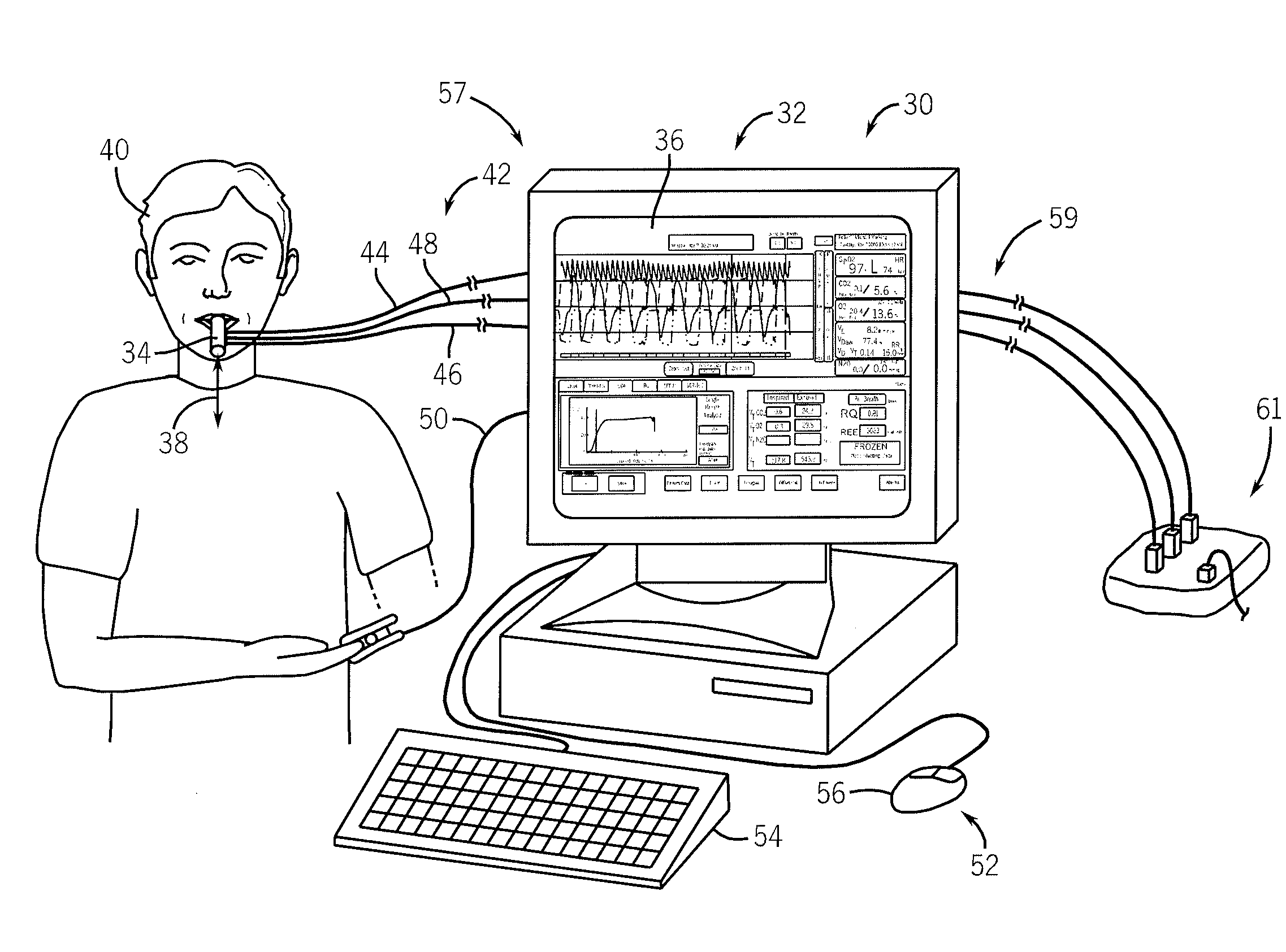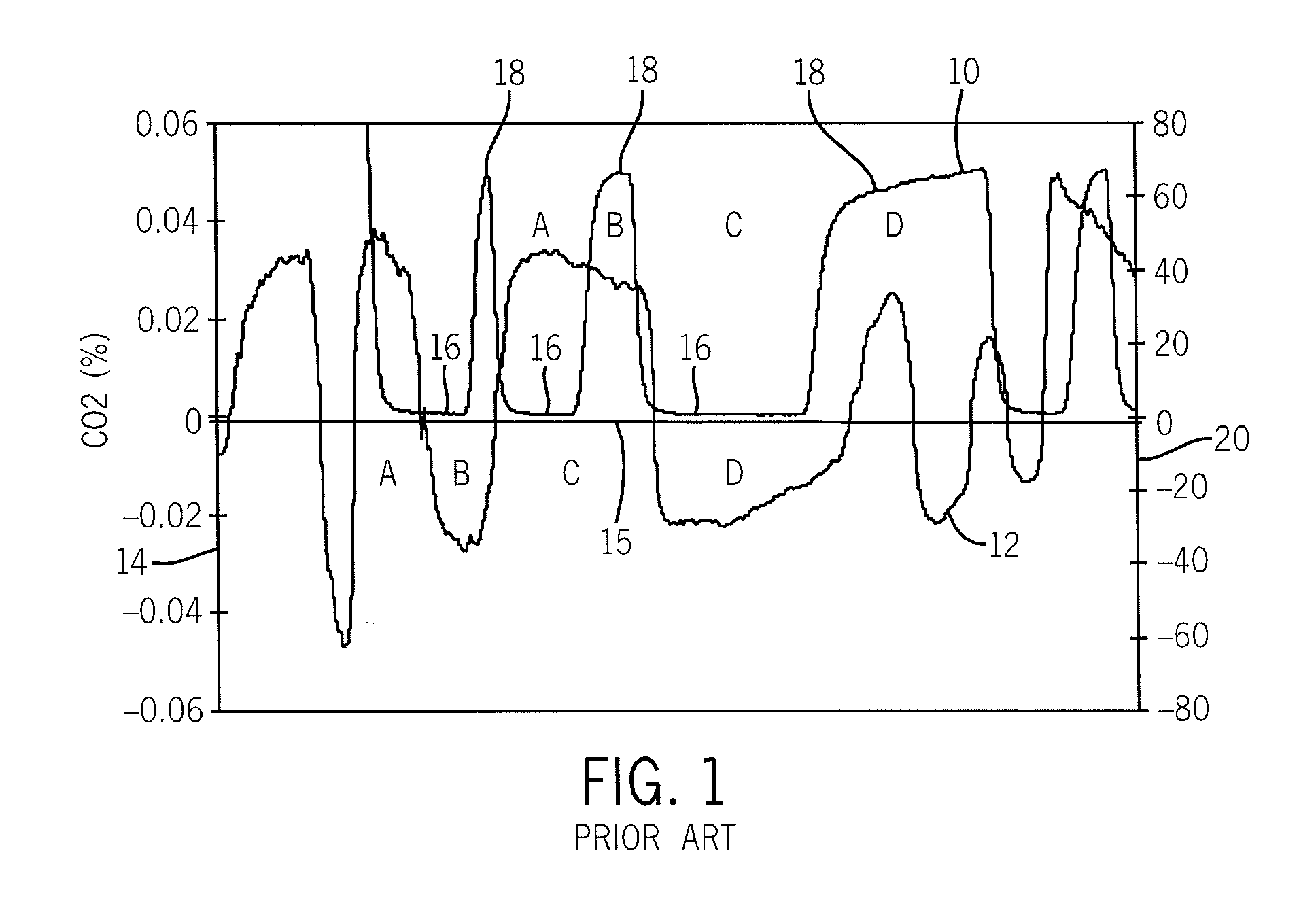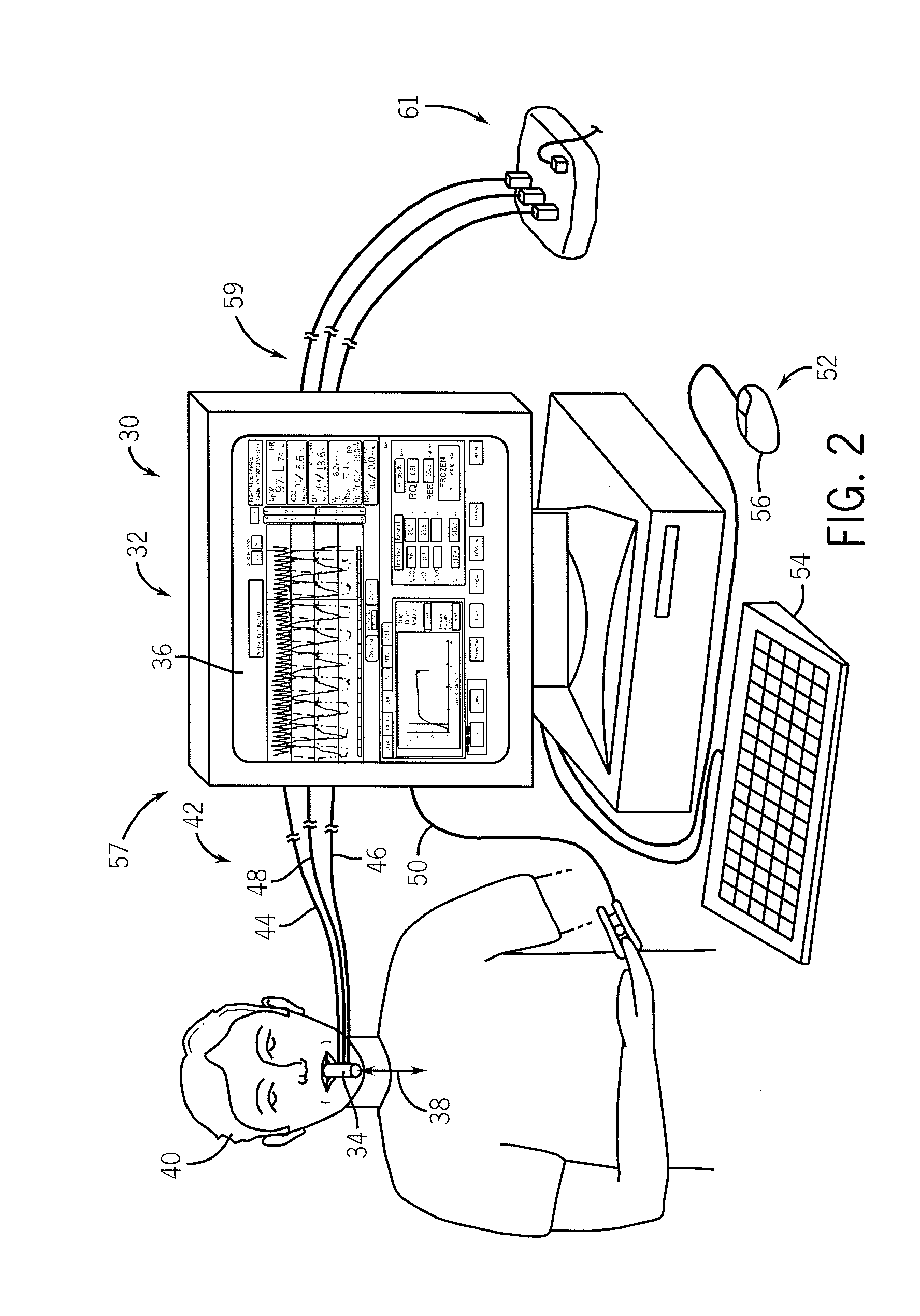Accordingly, failure to account for activities associates with these events detrimentally affects the accuracy of the information acquired and any conclusions based thereon.
Furthermore, the timeliness of the respiration performance determination directly affects
patient treatment determinations.
Although the flow anomaly is internally imperceptible to most people, the flow anomaly presents a discontinuity in the
respiratory flow that, if unaddressed, can lead to inaccurate interpretation of respiration performance.
Other physiological conditions, such as poor
lung performance, can also detrimentally affect interpretation of monitored respiration information.
Within the monitoring equipment, the connection lines and sensor construction can each present dead-space data collection errors.
For example, in an
oxygen rich environment, an
exhalation that includes elevated levels of
oxygen would not provide an accurate indication of respiration performance if compared to respiration performance for an environment that does not include the elevated levels of oxygen.
Similarly, an
exhalation that includes excessive amounts of
carbon dioxide provides no indication of the physiological performance if the testing environment is already rich in
carbon dioxide.
Understandably, such methods of comparing exhaled carbon dioxide levels to arterial carbon dioxide levels lack real-time monitoring of respiration performance.
This method, commonly referred to as the “Douglas Bag” collection method, is cumbersome, labor intensive, and discounts all of the information that can be acquired with real-time breath-by-breath
data acquisition and analysis.
A
disadvantage of mainstream monitoring is that the monitoring is commonly performed at the location of the patient's exhaled breadth, i.e., the mouth, or as close to the site of
exhalation as possible.
The equipment commonly utilized for such monitoring generally tends to be large, cumbersome, and costly.
Another drawback of such monitoring systems is the increase in dead-space volumes that must be overcome by a patient.
Attempts at miniaturizing these devices only further increases the cost associated with these
diagnostic tools.
Although side-stream systems, also known as metabolic carts, address most of these issues, such systems present other drawbacks.
This temporal or time wise misalignment makes side-stream systems more difficult to implement and the data acquired therefrom more difficult to interpret.
Unfortunately, the calibration process is generally only performed at the
initiation of a monitoring session, must be frequently repeated to ensure the accurate operation of the
monitoring system, and does not adequately address variations in the testing environment.
The output of known monitoring systems also presents the potential for misinterpretation.
Another lacking of known
respiration monitoring systems is the ability to concurrently align a respiration flow value, a carbon dioxide concentration value, and an oxygen concentration value.
Each of the drawbacks discussed above result in shortcomings in the implementation of known
respiration monitoring systems.
The cost and complexity of these
respiration monitoring systems result in their infrequent utilization or improper interpretation of the results acquired with such systems.
Furthermore, the information acquired and utilized by such systems limits the diagnostic functionality of such systems in disregarding that information that can be utilized by time aligning the variable functions of the respiration cycle and variations in operation of the monitoring system.
 Login to View More
Login to View More  Login to View More
Login to View More 


